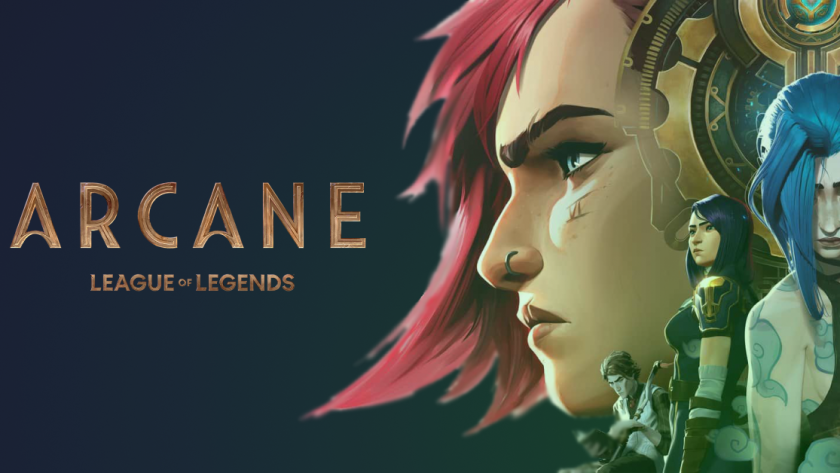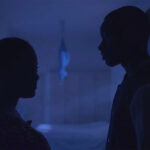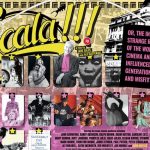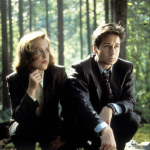Mara Dinu reflects on Arcane: League of Legends and the impressively intricate world the animated series has built.
It’s very funny to me how more and more people are starting to refer to Arcane as “that gay show”. To be honest, it’s quite hard to imagine any of the characters as completely straight, for many reasons: the edgy steampunk outfits, the colourful funky hairstyles or the simple fact that this series’ animation so perfectly creates a beautifully inclusive, queer world. But these characters live in a world which is far from perfect.
I am an avid animation consumer and Arcane: League of Legends has made it to the top of my all-time favourite shows – possibly the first in my list of animated series (among Bojack Horseman, Miyazaki’s films and ATLA). The story behind the show is based on the already existing League of Legends universe, and its choice of colours and animation style is one of the best artistic combinations I have ever seen. The motions and artistic flexibility created through the use of 3D animation is perfectly blended with the complex textural structures of 2D animation, which adds a completely new depth to the visual experience. The angles from which the characters were designed and the constantly changing perspective in the 3D animation both mimic an actual camera recording the live plot, as if the whole thing was shot in a studio. The show stayed in production for a period of 6 years, which is not surprising considering its eye for detail.
The same focus on the details is also noticeable in the characters’ development, and the patience with which each of these backstories is reflected in their complex arcs. There are multiple layers of trauma and psychological damage that sit beneath the personalities we get to see on screen. They become not only lively and more believable, but also more relatable for the viewers because there is no fundamental concept of good and bad in this show. I think the idea of good vs evil is in fact elevated, where everyone ends up being a balanced combination of these extremes, although they still act on the more or less flawed life principles they were taught to have in order to survive.

There isn’t one singular conflict in the show, but the main one, most obvious to all the characters, is between the corrupt society they all live in, the conflict which Arcane’s universe is built on. ‘Piltover’ is the city of progress where everyone is rich enough to focus solely on their own interests beneath which is ‘Zaun’, the polluted and degraded side of the world, where more conflicts arise and people breathe in toxic air as they struggle to find food. It’s only natural that in such a damaged environment, on which Piltover seems to have given up a long time ago, the existential problems that the people face take a different dynamic and the city begins to reform itself and to grow its own disfigured political system.
There is something utterly dark and serious about this show, unlike the others mentioned before. Bojack is dark, very dark, but at least it starts as a comedy. So, by the time you realise you shouldn’t have been laughing at all, it’s too late. Avatar the Last Airbender is such a bittersweet show – a perfect balance of funny dialogues and tense moments, deep thoughts and life philosophy. But Arcane starts at the end of a war and ends at the beginning of another war. Nothing goes right in any instance, and from all the potential endings that could happen in every of these key situations, the worst possible outcome occurs. One of the main characters, that we have probably all heard of at this point, is Jinx, the blue-haired crazy girl who’s only good at being bad. She is perhaps the most complex character of the series and her mental health issues stem from a situation that is very palpable, a huge misunderstanding that will dictate her life and the lives of the ones around her. But this just makes her all the more human. Her incapability of learning from her mistakes, or even worse, learning the wrong thing from them turns her into a misunderstood, psycho killer. However, there still is something within her that keeps her connected to her traumatising past. My personal favourite is Vi, Jinx’s sister, and the most attractive, gay animated ‘cool girl’ I’ve ever seen. The two of them are supposed to form a splendid pair, where Jinx would be the brain and Vi would be the muscles, but Jinx’s brains are all over the place in what seems to be an irremediable situation.
The romance between Vi and Caitlyn is probably one of the best (literal) power couples in the history of animation, but their different backgrounds appear as incompatible to Vi’s eyes, who gives them the name “oil and water”. The show consists of 9 episodes structured in three parts, the first one presenting their past and making the audience connect with all the characters on a more personal and intimate level. However, if you are looking for a happy or at least decent ending in any of these chapters, forget about it, the only way is downhill. I think this might be one of the aspects that unfortunately makes the show relatable.
The soundtrack is just as amazing, especially the two tracks designed specifically for the two most intense points of the story – “Goodbye” by Ramsey and Sting’s “What could have been”. I couldn’t recommend this series more – in terms of its animation techniques and the deeply personal view of the characters it is incomparable.
Arcane is streaming on Netflix:




